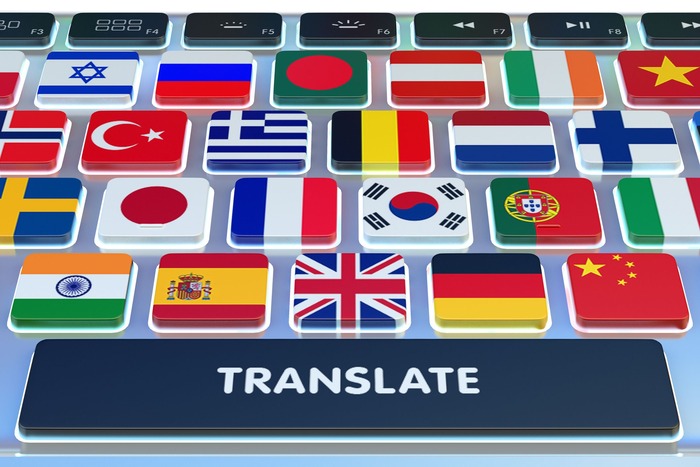Multilingual video translation is crucial in breaking language barriers and promoting global communication. It allows individuals from diverse linguistic backgrounds to access and understand video content, fostering inclusivity and enabling effective cross-cultural exchanges.
Traditional methods of multilingual video translation are often time-consuming, labor-intensive, and prone to errors. The manual process of translating videos requires significant resources and can lead to consistency in quality and accuracy.
Artificial Intelligence (AI) has the potential to revolutionize multilingual video translation by offering automated and efficient solutions.
AI-powered systems can analyze and understand video content, transcribe spoken words, and accurately translate them into different languages. This advancement can potentially improve the accessibility and effectiveness of multilingual video communication.
AI-Powered Multilingual Video Translation
Overview of AI-powered multilingual video translation
AI-powered multilingual video translation involves automating the translation process using machine learning algorithms and natural language processing techniques. These systems can process vast amounts of data and learn from patterns, generating accurate translations with minimal human intervention.
How AI can improve accuracy and efficiency in translation
AI’s ability to learn and adapt improves translation accuracy over time. It can quickly identify and correct errors, resulting in more precise translations. Additionally, AI-powered systems can translate motion pictures in real-time, substantially decreasing the time and effort required for manual translation.
Examples of AI-powered multilingual video translation tools
Several tools and platforms leverage AI to provide multilingual video translation solutions. For instance, Google’s Cloud Video Intelligence API uses machine learning algorithms to analyze video content, extract metadata, and offer translation options. Online video translation services employ AI to provide real-time translation of audiovisual content.
Benefits of AI-Powered Multilingual Video Translation
Improved accessibility for non-native speakers
AI-powered multilingual video translation makes video content accessible to non-native speakers, allowing them to understand and engage with the material. This inclusivity promotes educational opportunities, cultural exchange, and global collaboration.
Increased global reach for businesses and organizations
Businesses and organizations can expand their reach to audiences worldwide by employing AI-powered multilingual video translation.
They can effectively communicate their messages and offerings in multiple languages, enabling them to cater to diverse markets and enhance international partnerships.
Enhanced cultural understanding and communication
AI-powered multilingual video translation facilitates cross-cultural understanding by enabling individuals to access and comprehend content in their native languages. This fosters empathy, strengthens connections, and facilitates effective communication across linguistic and cultural boundaries.
Challenges and Limitations
Ethical concerns surrounding AI-powered translation
While AI-powered multilingual video translation offers substantial benefits, ethical concerns arise regarding translation accuracy and cultural nuances.
AI systems may inadvertently introduce biased or offensive content due to limitations in understanding context and cultural sensitivities. Ensuring ethical guidelines and human oversight is essential to address these concerns.
Limitations of current AI technology
Current AI technology, though advanced, still has limitations. It may need help with complex sentence structures, idiomatic expressions, or language with limited training data. Addressing these limitations requires ongoing research and development to improve AI models and algorithms.
Importance of human oversight and review
While AI can greatly enhance efficiency, human oversight, and review are essential to ensure the quality and accuracy of translations.
Human translators can offer linguistic expertise, cultural understanding, and nuanced interpretations that AI systems may lack. A hybrid approach that combines AI capabilities with human intervention is crucial for reliable and culturally sensitive multilingual video translation.
Future of Multilingual Video Translation
Potential for further advancements in AI technology
As AI technology evolves, we can assume big improvements in multilingual video translation. Advances in herbal language processing, gadgets gaining knowledge of, and neural networks will result in more accurate translations and better interpretation of context and cultural nuances.
Integration of AI and human translation
The destiny of multilingual video translation lies in harnessing the strengths of both AI and human translators. An integrated approach that combines AI-powered automated systems with human expertise can produce the most accurate and culturally relevant translations.
Implications for global communication and collaboration
AI-powered multilingual video translation advancements will have far-reaching implications for global communication and collaboration. They will allow better cross-cultural understanding, facilitate international partnerships, and promote cultural exchange in diverse fields, including schooling, business, entertainment, and international relations.
Conclusion
AI-powered multilingual video translation holds significant potential for bridging linguistic barriers and promoting global communication and understanding.
Its automated and efficient solutions provide better accessibility, broader global reach, and deeper cultural understanding. Continued research and development are vital to fully realizing the potential of AI-powered multilingual video translation.
Investment in the AI field, gathering reliable training data, addressing ethical concerns, and fostering collaboration between AI experts and human translators will contribute to advancing the industry and unlocking its benefits on a global scale. This will facilitate communication and promote cultural exchange, economic growth, and diplomacy.


